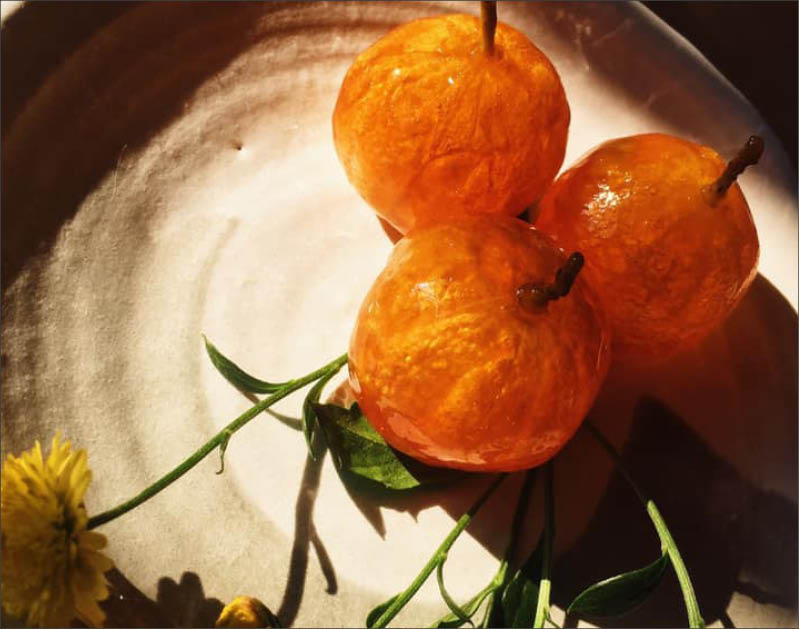
The transparent kumquat jam
In such a small space, there is a mix of her footstep back and forth, the crackling fire and the tasty smell of the jam while my grandmother is making jam for Tet. The late sun light out there is quietly creeping through the corrugated iron roof, shining down the kitchen, and filling my grandmother’s pan of jam on the oven with yellow sunshine.
My grandmother is quite old now, but her bony hands are still skillful regardless of time. She can make jam from any kind of root vegetables in the garden, such as carrot, sweet potato, peanut, winter melon, and even orange and grapefruit peels. Making jam is a very laborious task, especially the kumquat jam. Different younger generations in my family, including my mother, my aunts and myself are unable to make as tasty eye-catching kumquat jam as my grandmother is.
She only refers to it as ‘kumquat’ though the fruit has many different names such as ‘tac’ or ‘quat’. The kumquat trees in the garden were originally bought by my uncles many years ago for decoration during Tet. After Tet, she planted them out in the garden. They grow well and produce small fruits of thumb-tip size all year round.
In the lunar December, the kumquat trees in the garden are fruitful. In the winter unpleasant sunshine, the green kumquat soon turns yellow. My grandmother goes out the garden to pick the fresh, plump, big kumquats for the jam.
Once she makes jam, she often says that anything that is home grown and made is the preservative-free safe. Perhaps, the jam she makes seems to taste better than any other kind of jam.
It is a real laborious task to make kumquat jam. She is successful because she is so patient. First, she uses a razor to remove the zest of a kumquat with small dots containing oil. This is the most time-consuming stage that must be completed with meticulousness because a deep paring will damage the whole kumquat.
After paring, she uses a small pair of scissors to cut a tiny hole at the stem to remove the seeds. This stage is also important because, as she says, only one seed remaining can damage the whole pan of jam due to the bitterness it causes.
In order to have the jelly chewy kumquat, my grandmother often dissolves some lime in water, settles it and extracts the surface liquid, then she soaks the kumquats in that liquid half a day. After that, she washes and rinse them thoroughly, blanches them for a while before soaking them in ice, which helps the kumquats stay in shape when they are heated.
To have transparent yellow kumquat jam, my grandmother soaks kumquats in sugar for another half a day. After the kumquats absorb the dissolved sugar, she starts simmering the kumquats.
My grandmother uses cast-iron pan to simmer the jam. The kumquats are soaked in the sugar liquid heated on the low temperature until they absorb the sugar and the liquid dries up.
Sitting by the side of the oven to simmer jam, my grandmother sweats, producing tiny drops on her forehead even it is in winter. With the freckle-covered hands, she constantly stirs the kumquats in the pan, and at the same time reshaping them to avoid distortion. When the sugar liquid in the pan get dried, the kumquats turn transparent brown yellow and the jam is done.
If it is sunny, my grandmother will dry the kumquats for a few hours. The jam will be more transparent under the sun light. The kumquat jam my grandmother makes always looks round and full of golden sunlight. It is chewy and jelly and tastes a mixture of sweet and sour, that seems to stay long at the tongue tip.
Story and photo: LINH CHI
